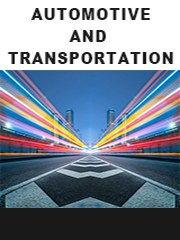TOP CATEGORY: Chemicals & Materials | Life Sciences | Banking & Finance | ICT Media

Download Report PDF Instantly
Report overview
The global Low-speed Electric Vehicle market was valued at US$ 7343.6 million in 2022 and is projected to reach US$ 9129.2 million by 2029, at a CAGR of 3.2% during the forecast period. The influence of COVID-19 and the Russia-Ukraine War were considered while estimating market sizes.
The USA market for Global Low-speed Electric Vehicle market is estimated to increase from USD million in 2022 to reach USD million by 2030, at a CAGR during the forecast period of 2023 through 2030.
The China market for Global Low-speed Electric Vehicle market is estimated to increase from USD million in 2022 to reach USD million by 2030, at a CAGR during the forecast period of 2023 through 2030.
The Europe market for Global Low-speed Electric Vehicle market is estimated to increase from USD million in 2022 to reach USD million by 2030, at a CAGR during the forecast period of 2023 through 2030.
A low speed electric vehicle (LSV) is a four-wheeled vehicle with an attainable speed of more than 20 miles per hour but not more than 25 miles per hour (in China, not more than 70 kilometers per hour) on a paved surface, and it has a gross vehicle weight rating (GVWR) of less than 3,001 pounds. It cannot be powered by gas or diesel fuel.
This report aims to provide a comprehensive presentation of the global market for Low-speed Electric Vehicle, with both quantitative and qualitative analysis, to help readers develop business/growth strategies, assess the market competitive situation, analyze their position in the current marketplace, and make informed business decisions regarding Low-speed Electric Vehicle. This report contains market size and forecasts of Low-speed Electric Vehicle in global, including the following market information:
Global Low-speed Electric Vehicle Market Revenue, 2018-2023, 2024-2029, ($ millions)
Global Low-speed Electric Vehicle Market Sales, 2018-2023, 2024-2029, (K Units)
Global top five Low-speed Electric Vehicle companies in 2022 (%)
In China, main manufacturers of low speed electric vehicles include Letin, Jinpeng and Honri, etc. The top three players hold a share nearly 55%. The largest China market is East China, holds a share about 55%, followed by Central China and North China, both holding a share about 14 percent.
We surveyed the Low-speed Electric Vehicle manufacturers, suppliers, distributors and industry experts on this industry, involving the sales, revenue, demand, price change, product type, recent development and plan, industry trends, drivers, challenges, obstacles, and potential risks.
Total Market by Segment:
Chapter 1: Introduces the definition of Low-speed Electric Vehicle, market overview.
Chapter 2: Global Low-speed Electric Vehicle market size in revenue and volume.
Chapter 3: Detailed analysis of Low-speed Electric Vehicle manufacturers competitive landscape, price, sales and revenue market share, latest development plan, merger, and acquisition information, etc.
Chapter 4: Provides the analysis of various market segments by type, covering the market size and development potential of each market segment, to help readers find the blue ocean market in different market segments.
Chapter 5: Provides the analysis of various market segments by application, covering the market size and development potential of each market segment, to help readers find the blue ocean market in different downstream markets.
Chapter 6: Sales of Low-speed Electric Vehicle in regional level and country level. It provides a quantitative analysis of the market size and development potential of each region and its main countries and introduces the market development, future development prospects, market space of each country in the world.
Chapter 7: Provides profiles of key players, introducing the basic situation of the main companies in the market in detail, including product sales, revenue, price, gross margin, product introduction, recent development, etc.
Chapter 8: Global Low-speed Electric Vehicle capacity by region & country.
Chapter 9: Introduces the market dynamics, latest developments of the market, the driving factors and restrictive factors of the market, the challenges and risks faced by manufacturers in the industry, and the analysis of relevant policies in the industry.
Chapter 10: Analysis of industrial chain, including the upstream and downstream of the industry.
Chapter 11: The main points and conclusions of the report.